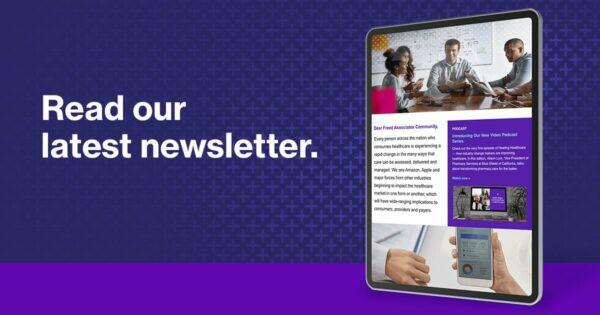Occupational Health Company Creates New Operations Model to Drive Efficiency
A provider of occupational medicine and worker's compensation services sought to improve the consistency and effectiveness of its administrative capabilities serving its employer and payer clients. Over time this company had grown to have multiple regional offices and management teams and wanted to make them more efficient by documenting and aligning their processes.

Problem to Solve
As employers increasingly rely on work injury care and preventive screenings such as health evaluations and screenings to ensure the well-being and productivity of their employees, they are also turning to external organizations to comprehensively and cost-effectively provide such services. That’s not a surprise, given the high degree of administrative coordination required to properly oversee such highly regulated work.
A provider of occupational medicine and worker’s compensation services sought to improve the consistency and effectiveness of its administrative capabilities serving its employer and payer clients. Over time this company had grown to have multiple regional offices and management teams and wanted to make them more efficient by documenting and aligning their processes. Long-term, the company wanted a scalable operating model for all of its regions to standardize how these offices worked.
Lacking the in-house experience and capability to fully develop and manage an optimization project of this breadth and complexity, the company engaged Freed Associates (Freed) to provide process design input, business analysis and project management.
Strategy and Tactics
The key to successfully leading and executing this large-scale initiative was gaining buy-in and support from multiple internal departments and resources within the company. This was compounded by the fact that the company had previously failed to initiate several of these improvements on its own, leaving relevant employees fatigued and skeptical of the likelihood of success of this new effort. Freed needed to quickly gain input on this project from key management and staff and rapidly develop their confidence in this new project initiative.
Work began by dividing the project into four distinct sub-projects:
- Redesign occupational medicine sales processes
- Enhance worker’s compensation forecasting capabilities
- Standardize marketing and communication processes to support clinic openings
- Define worker’s compensation customer reporting requirements
Additionally, each of the four identified sub-projects needed to be operationalized, so that the company could manage them on its own in the future. This meant Freed also needed to develop all relevant training resources for these sub-projects, as well as create a following-year process improvement plan.
Results
Freed and the client successfully completed each of the originally identified four sub-projects within this initiative. The results of this effort included:
- Redesigned occupational medicine sales processes to close process gaps and increase role clarity – Enhanced processes were created to qualify sales, respond to RFPs, draft new contracts, and amend existing contracts.
- Enhanced worker’s compensation forecasting capabilities to support more effective and accurate planning – New, detailed business requirements were created as well as a forecasting methodology using a historical claim data analysis and industry trend analysis.
- Standardized clinic opening marketing and communication processes to drive a more consistent customer experience and ensure engagement of the right resources – After analyzing prior clinic opening processes, the team developed best practices for future clinic openings and workflows.
- Defined worker’s compensation customer reporting requirements to increase reporting capabilities and improve customer satisfaction – To meet the customer’s reporting requirements, new detailed business requirements were defined and report requirements were developed.
Conclusion
The company gained a new, scalable operating model applicable to all of its current and planned future locations. This included optimized sales processes, enhanced forecasting capabilities, a template for future facility openings, and improved reporting requirements, as well as all related training materials. In aggregate, these enhancements will help the company achieve greater standardization across its regional offices to better serve its clients and meet future business expansion goals.


